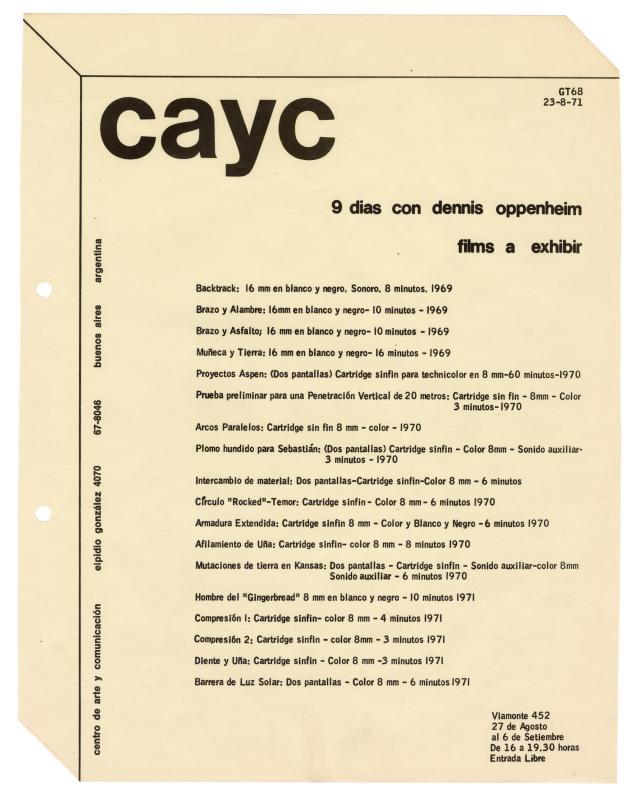Ever since it was founded, the CAYC (Centro de Arte y Comunicación), helmed by the cultural promoter, artist, and businessman Jorge Glusberg, was intended as an interdisciplinary space where an experimental art movement could flourish. The establishment of collaborative networks connecting local and international artists and critics played a key role in this process. The exhibitions shone a light on these exchanges, in which overviews of trends or individual artists introduced the innovations of international contemporary art and made Argentine and Latin American artists better known on the global scene.
Over time, several exhibitions and activities were organized with some of the international guests at the CAYC premises on Viamonte Street. Dennis Oppenheim (1938–2011), for one. The versatile North American artist—whose fields were Conceptualism, performance art, earth art, sculpture, and photography—came to Buenos Aires for the closing of the event; he also had his own solo exhibition at the CAYC and gave a talk. 9 días con Dennis Oppenheim included environmental and somatic works that used photography, film, and video to document actions in which the author uses the landscape or his own body (body art) to address subjects that range from ecological issues to the energy exchange between body and subject matter, as well as paternity as an “extension of itself.”
The supports and devices used are described in the lists of films (GT-68; doc. no. 1476301) and videotapes (GT-69), which explains how important these specifications were for the CAYC. It is basically about the expressive possibilities generated by the convergence of art, technology, and mass communication. Some of the films had been screened at Information, the paradigmatic exhibition that provided an international overview of the work of the experimental avant-garde that MoMA had produced, curated by Kynaston McShine, from July to September 1970. Video productions were definitely an innovation in Argentina, where a local version did not emerge until the late 1970s.

